
Simon the Sorcerer is a 1993 point-and-click adventure game developed and published by Adventure Soft, for Amiga and MS-DOS. The game's story focuses on a boy named Simon who is transported into a parallel universe of magic and monsters, where he embarks on a mission to become a wizard and rescue another from an evil sorcerer. The game's setting was inspired by the novels of the Discworld series, and incorporates parodies on fantasy novels and fairy tales, such as The Lord of the Rings and Jack and the Beanstalk. The lead character's design was inspired by that of the fictional British television character Blackadder, with the character voiced by Chris Barrie in the CD re-release.

Populous is a video game developed by Bullfrog Productions and published by Electronic Arts, released originally for the Amiga in 1989, and is regarded by many as the first god game. With over four million copies sold, Populous is one of the best-selling PC games of all time.
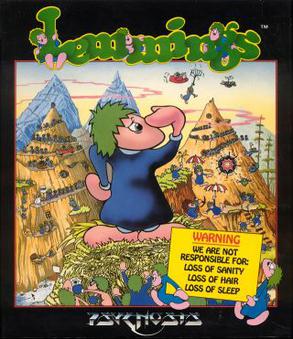
Lemmings is a puzzle–strategy video game originally developed by DMA Design and published by Psygnosis for the Amiga in 1991 and later ported for numerous other platforms. The game was programmed by Russell Kay, Mike Dailly and David Jones, and was inspired by a simple animation that Dailly created while experimenting with Deluxe Paint.

Pinball Fantasies is a 1992 pinball video game originally developed by Digital Illusions and published by 21st Century Entertainment in Europe for the Amiga home computers. It is the sequel to Pinball Dreams, which was released earlier in the same year on multiple platforms. In the game, players can choose between any of the four available playfields, both of which have their own thematic and main objectives in order to obtain the highest score possible.

Soccer Kid is a 1993 side-scrolling platform game developed and published by Krisalis Software in Europe for the Amiga. The player assumes the role of the titular main protagonist who travels across several countries around the world to repair the World Cup by retrieving pieces that were scattered by the alien pirate Scab, the main antagonist who failed to steal and add it to his trophy collection in a robbery attempt. Its gameplay mainly consists of platforming and exploration elements, with a main single-button or two-button configuration, depending on the controls setup.
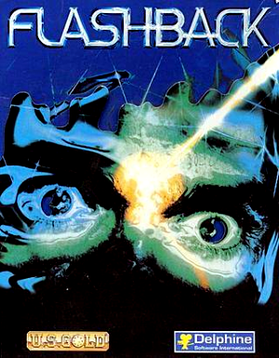
Flashback, released as Flashback: The Quest for Identity in the United States, is a 1992 science fiction cinematic platform game developed by Delphine Software of France and published by U.S. Gold in the United States and Europe, and Sunsoft in Japan.
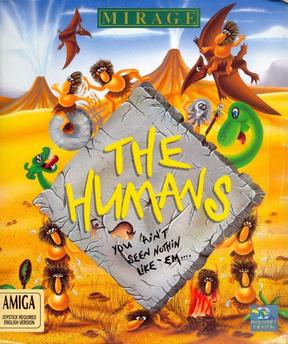
The Humans is a puzzle-platform video game developed by Imagitec Design in Dewsbury, England and originally published by Mirage Technologies for the Amiga in May 1992. It was later ported to other home computers and consoles. The goal of the game varies per level but usually revolves around bringing at least one of the player-controlled humans to the designated end area marked by a colored tile. Doing this requires players taking advantage of the tribe's ability to build a human ladder and use tools such as spears, torches, wheels, ropes and a witch doctor in later levels.

Dark Seed is a psychological horror point-and-click adventure game developed and published by Cyberdreams in 1992. It exhibits a normal world and a dark world counterpart, which is based on artwork by H. R. Giger. It was one of the first point-and-click adventure games to use high-resolution graphics, to Giger's demand. A sequel, Dark Seed II, was released in 1995.

Cadaver is an isometric action-adventure game by the Bitmap Brothers, originally released by Image Works in August 1990, for Atari ST, Amiga, and MS-DOS. A Mega Drive version was planned but never released. In the game the player controls Karadoc the dwarf.

Jungle Strike is a video game developed and published by Electronic Arts in 1993 for the Sega Genesis/Mega Drive. The game was later released on several other consoles such as the Super Nintendo Entertainment System (SNES), and an upgraded version was made for DOS computers. The Amiga conversion was the responsibility of Ocean Software while the SNES and PC DOS versions were that of Gremlin Interactive, and the portable console versions were of Black Pearl Software. It is the direct sequel to Desert Strike and is the second installment in the Strike series. The game is a helicopter-based shoot 'em up, mixing action and strategy. The plot concerns two villains intent on destroying Washington, D.C. The player must use the helicopter and occasionally other vehicles to thwart their plans.
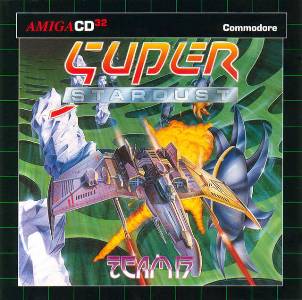
Super Stardust is a 1994 game developed by Bloodhouse and published for the Amiga (AGA) and Amiga CD32 by Team17. The game was ranked the 26th best game of all time by Amiga Power.

Monster Max is a 1994 action-adventure puzzle video game developed by Rare and published by Titus France in Europe for the Game Boy. The player is the titular aspiring rock star, who, in an attempt to fight King Krond who bans all music, traverses nine floors of the Mega Hero Academy. Floors consist of diversely-designed rooms of puzzles to solve, the player having to figure out the order of actions to take.
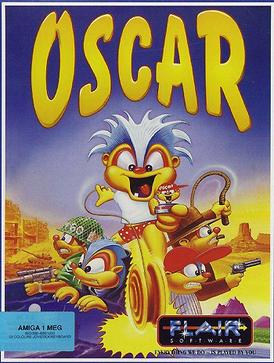
Oscar is a platform game that was released on Amiga, Amiga CD32, and MS-DOS in 1993, and the Super Nintendo Entertainment System in 1996. It was developed and published by Flair Software. The CD32 version was bundled with the CD32 console on the same disc as the puzzle game Diggers. A Sega Genesis version planned but never released.

Worms is a 2D artillery tactical video game developed by Team17 and released in 1995. It is the first game in the Worms series of video games. It is a turn based game where a player controls a team of worms against other teams of worms that are controlled by a computer or human opponent. The aim is to use various weapons to kill the worms on the other teams and have the last surviving worm(s).
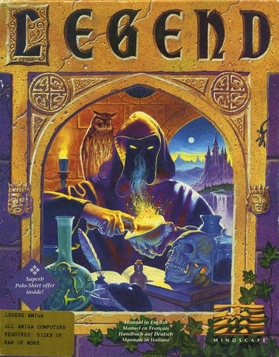
Legend, also known as The Four Crystals of Trazere in the United States, is an isometric fantasy role-playing game released in 1992 for the Amiga, Atari ST, and DOS. It was developed by Pete James and Anthony Taglione for the then UK-based Mindscape, and published by The Software Toolworks. In the game, the player controls four adventurers on a quest to save the land of Trazere from an ancient, re-awakening evil. In 1993, Mindscape released a sequel, Worlds of Legend: Son of the Empire. The copyrights for both "Legend" and "Worlds of Legend" are currently owned by Ubisoft, who bought them from Mattel Interactive with the rest of the Mindscape library in 2001.

Diggers is a puzzle video game for the Amiga CD32 in which the player takes control of a mining team excavating a planet for precious minerals.
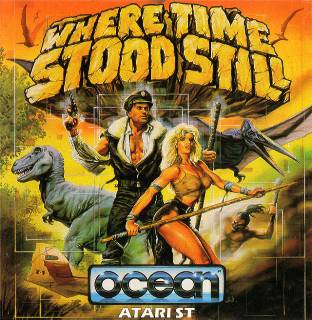
Where Time Stood Still is an isometric action-adventure game released by Ocean in 1988 for the Sinclair Spectrum 128K, MS-DOS and Atari ST. The game was ported by fans to Amiga in July 2014, and on Amiga CD32 in December 2014 and was converted from the Atari ST version with some enhancements which were not present in other iterations. A Commodore 64 version was considered but never started. The game was produced by Denton Designs as a follow-up to The Great Escape from 1986.

The Amiga CD32 (stylized as Amiga CD32, code-named "Spellbound") is a 32-bit home video game console developed by Commodore and released in Europe, Australia, Canada, and Brazil. It was first announced at the Science Museum in London on July 16, 1993, and was released in September of the same year.

The Lost Vikings is a puzzle-platform game developed by Silicon & Synapse and published by Interplay. It was originally released for the Super NES in 1993, then subsequently released for the Amiga, Amiga CD32, MS-DOS, and Mega Drive/Genesis systems; the Mega Drive/Genesis version contains five stages not present in any other version of the game, and can also be played by three players simultaneously. Blizzard re-released the game for the Game Boy Advance in 2003. In 2014, the game was added to Battle.net as a free download emulated through DOSBox. In celebration of the company's 30th anniversary, The Lost Vikings was re-released for Microsoft Windows, Nintendo Switch, PlayStation 4 and Xbox One as part of the Blizzard Arcade Collection in February 2021.

Brutal Sports Football is a 1993 sports video game developed by Teque London and originally published by Millennium Interactive for the Amiga. It was re-published for MS-DOS and Amiga CD32, and later became the first third-party title published for the Atari Jaguar. The first entry in the Brutal Sports series, the game is a fictional style of football played against human or computer-controlled opponents. It features a different take on american football by emphasising the violent aspect of the sport.




















